Glass Towers Are So Passé. What Will Replace Them?

Architects: Find the perfect materials for your next project through Architizer. Manufacturers: Sign up now to learn how you can get seen by the world’s top architecture firms.
Throughout much of the 20th century, glass skyscrapers were seen as the ultimate architectural symbol of progress. Along with post-war innovation came the ability to manufacture large glass panes that could be produced both quickly and uniformly and as a result, many architects were eager to display such advancements — as noticeably and erect as possible, I might add — on the world stage.
Of course, this did not come without costs. Since 40% of the world’s energy consumption and approximately one-third of global greenhouse gas emissions comes from buildings, any architectural trend as prolific as this one, can and often does have massive effects on the environment. Beyond the aesthetic homogeneity of all-glass skylines (and yes, we’re talking that all-too-familiar blue-ish green tint), we are witnessing a growing skepticism regarding the overall benefits of this type of construction.
While some architects are choosing to adapt with glass, harnessing burgeoning technologies such as building-integrated photovoltaics and leveraging various avenues of the material’s sustainable potential, many high-profile architects are choosing to move away from the practice. Some of the results, namely in New York City, are both shocking and energizing, and offer a welcome respite from the status quo.
In this collection, discover just a few of the spectacular buildings cropping up on the City’s skyline that are sure to stand out for many years to come.

Rendering via Dezeen
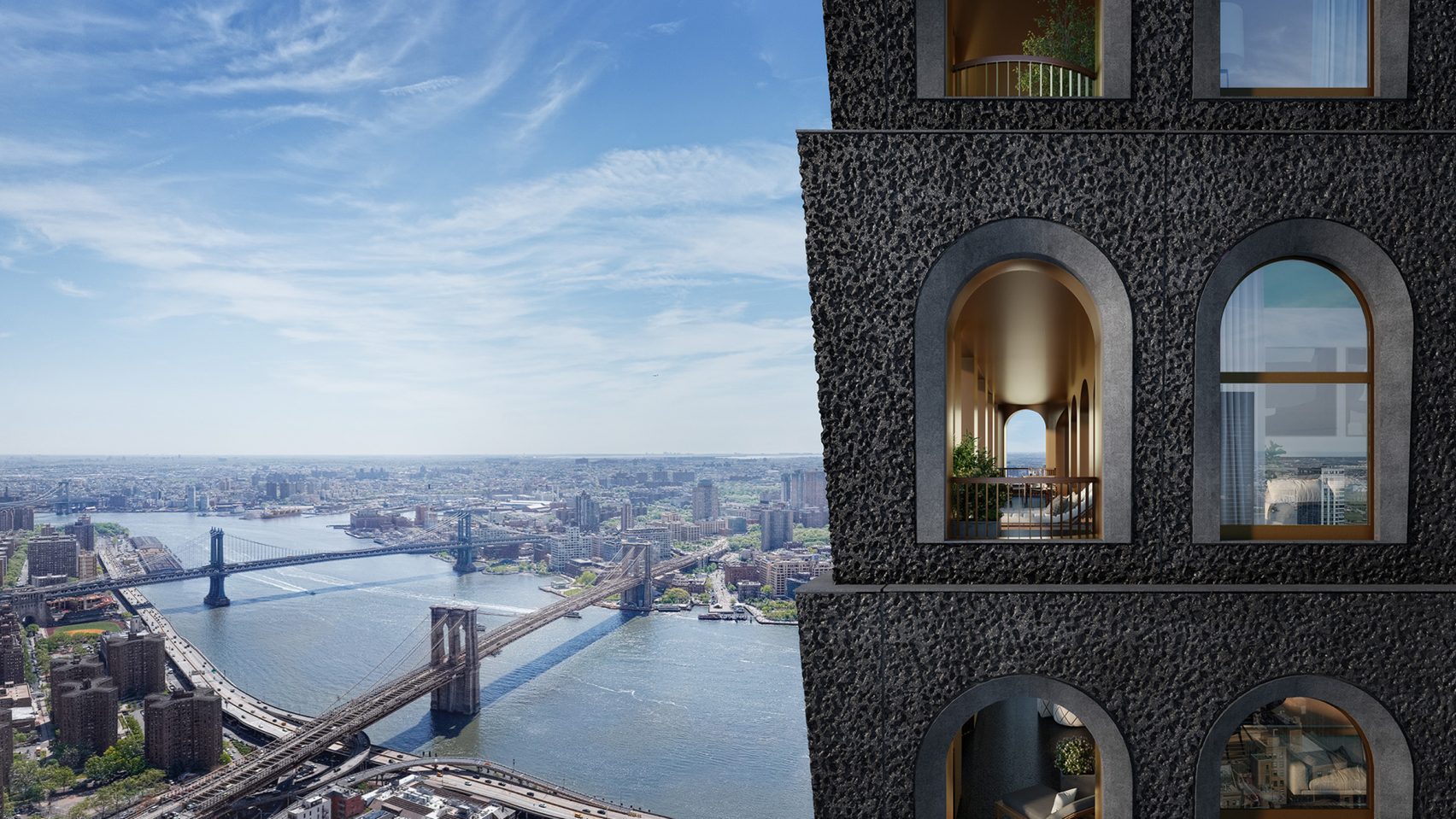
Rendering via Dezeen
“Lava Stone” Concrete
130 William by David Adjaye, New York City
David Adjaye — the architect behind D.C.’s National Museum of African American History — is making a new international mark, with his first ever New York City skyscraper. Set for completion in 2020, the 66-story, 244-unit residential tower built in collaboration with Hill West Architects and Lightstone, is cloaked in a dark gray concrete façade that is meant to resemble lava stone. The entire face of the building, including its highly detailed, faceted texture, draws inspiration from the stone and masonry craftsmanship of other historic buildings in the neighborhood.
According to Adjaye, “The design for 130 William acknowledges the tower’s location on the city’s earliest streets.” Adjaye was “inspired to craft a building that turns away from the commercial feel of glass and that instead celebrates New York’s heritage of masonry architecture with a distinctive presence in Manhattan’s skyline.”

Rendering via Dezeen
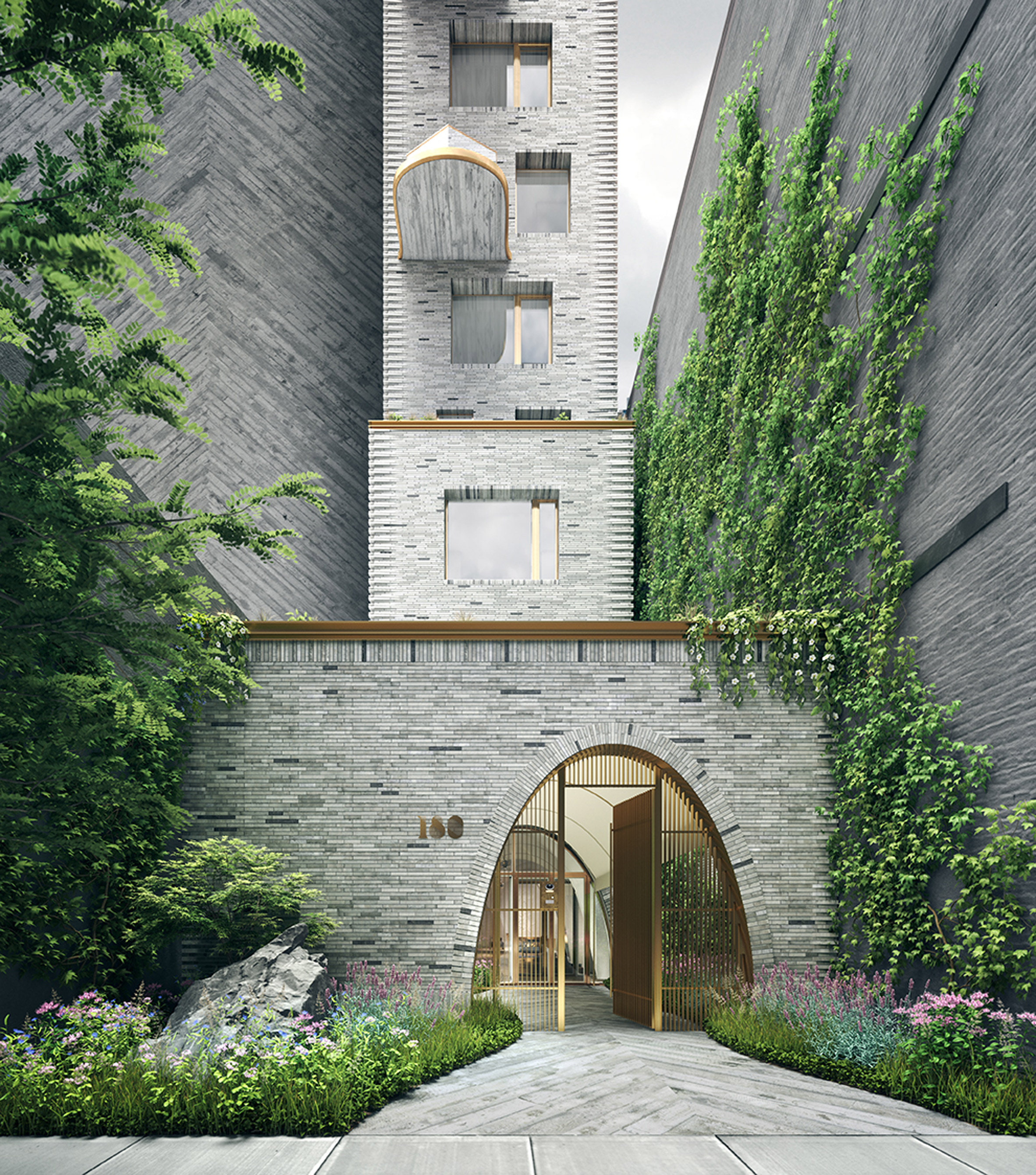
Rendering via Dezeen
Handmade Bricks
180 East 88th Street by DDG, New York City
180 East 88th Street by DDG, which is under construction in New York City’s Carnegie Hall, will be one of the tallest skyscrapers in the area once completed. With this design, DDG sought to reference masonry high rises constructed in New York between 1920 and 1940, many of which were built in the art deco architectural style.
The new tower will be clad in 594,433 handmade bricks, which will be set in wooden moulds and fired as several temperatures to create varying shades of grey. Altogether, the building’s exterior will feature patterned grey brickwork, concrete laid in a chevron pattern, vaulted balconies, and brass frames.
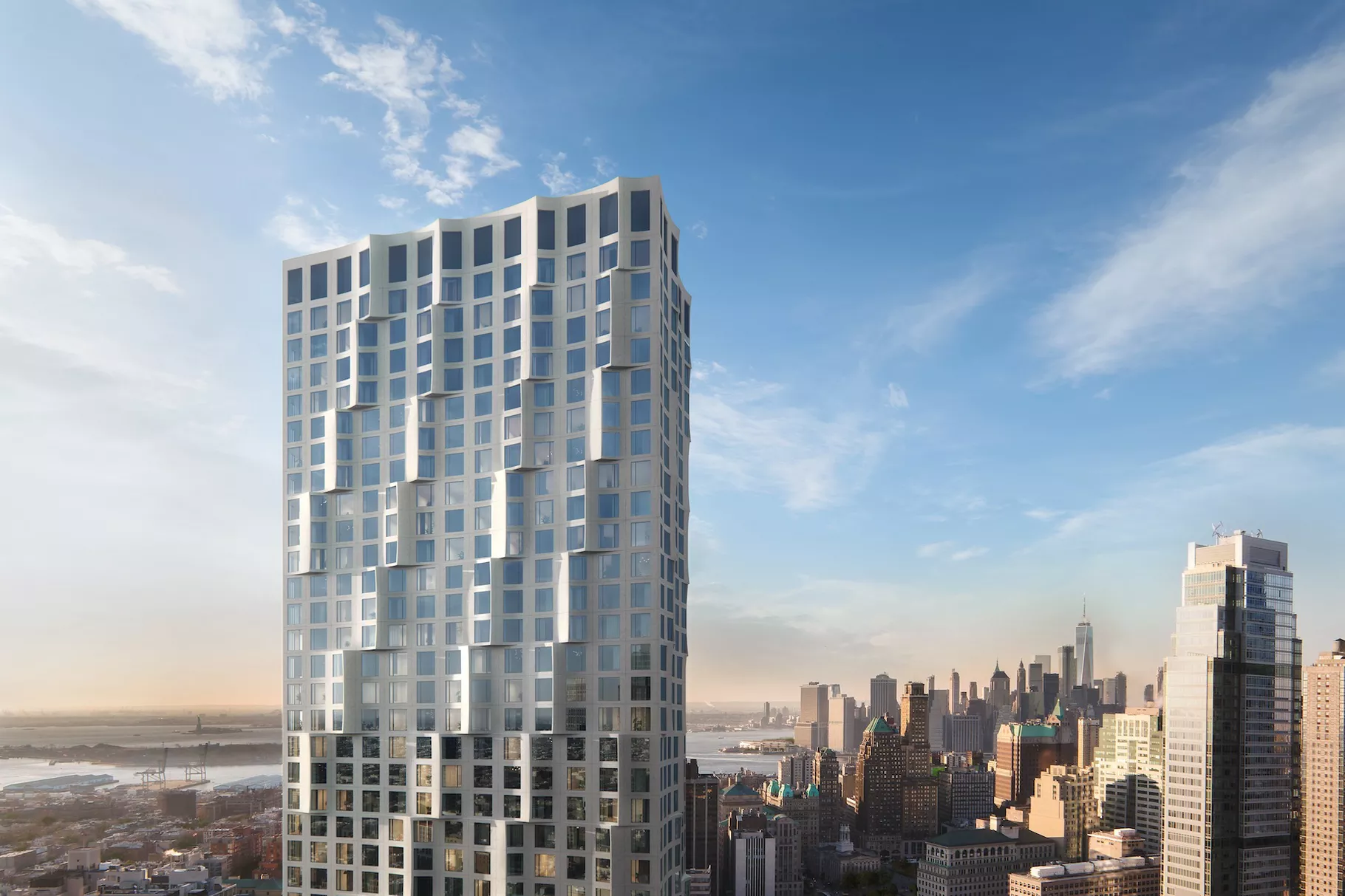
Rendering by Binyan via Studio Gang
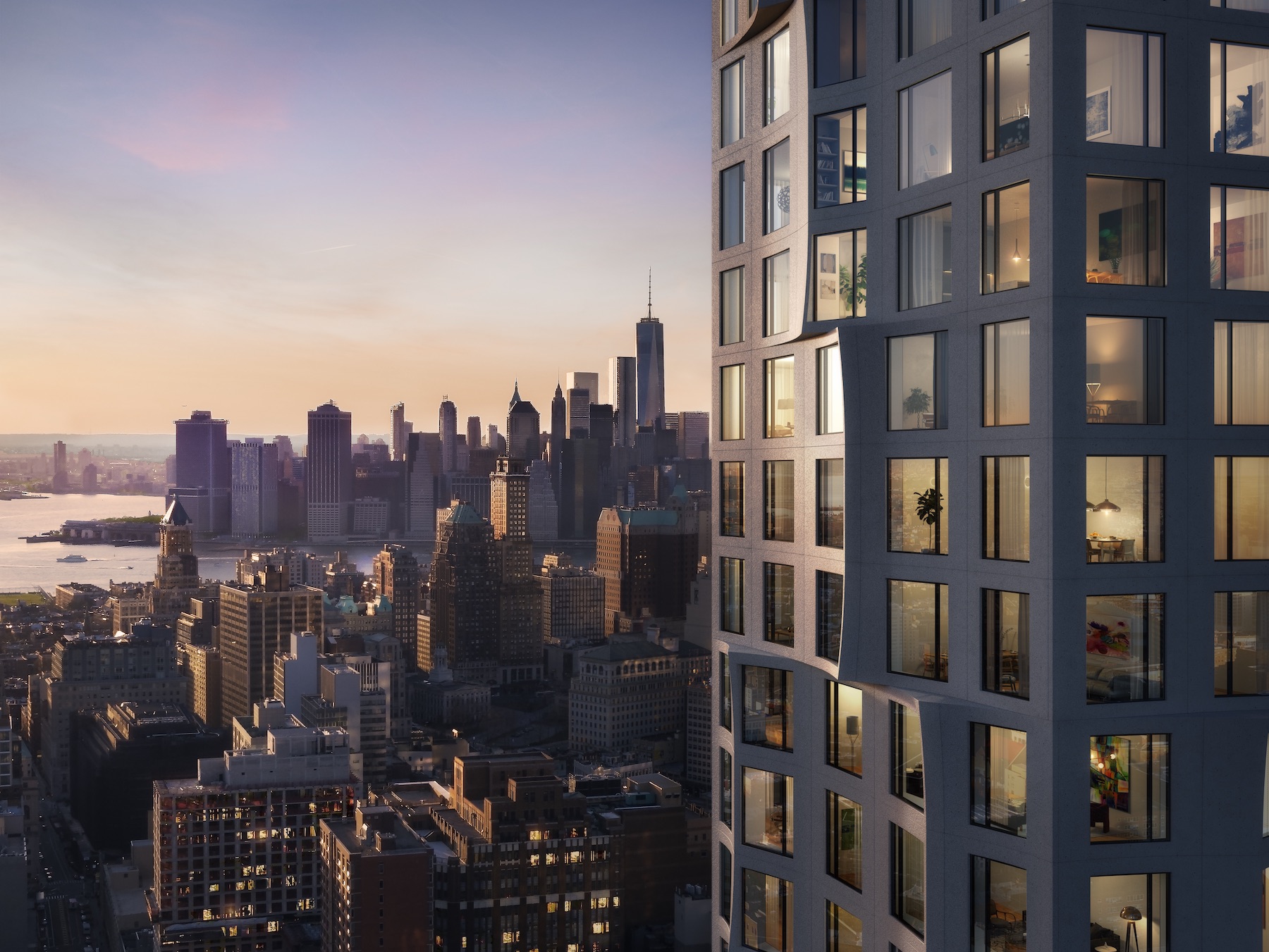
Rendering by Binyan via Studio Gang
Precast Concrete
11 Hoyt by Studio Gang, Brooklyn
Over the last twenty years, Downtown Brooklyn’s residential population has increased by more than 40-percent. However, many residents have noted that the Downtown area — a center of commercial and civic life — lacks comfortable outdoor space. With 11 Hoyt, which is currently under construction, Studio Gang sought to design a tower that would “provide space for nature and community to thrive, vertically, within the densifying neighborhood.”
Formerly a parking garage, the full-block site will be transformed into an elevated green podium anchored by a precast concrete tower with scalloped edges. The building’s sculptural exterior not only makes for a dynamic addition to Hoyt Street, but it also pushes out and diversifies the interior floor plan, allowing for built-in windows seats framed by eight-foot-tall windows.

Image via ArchDaily
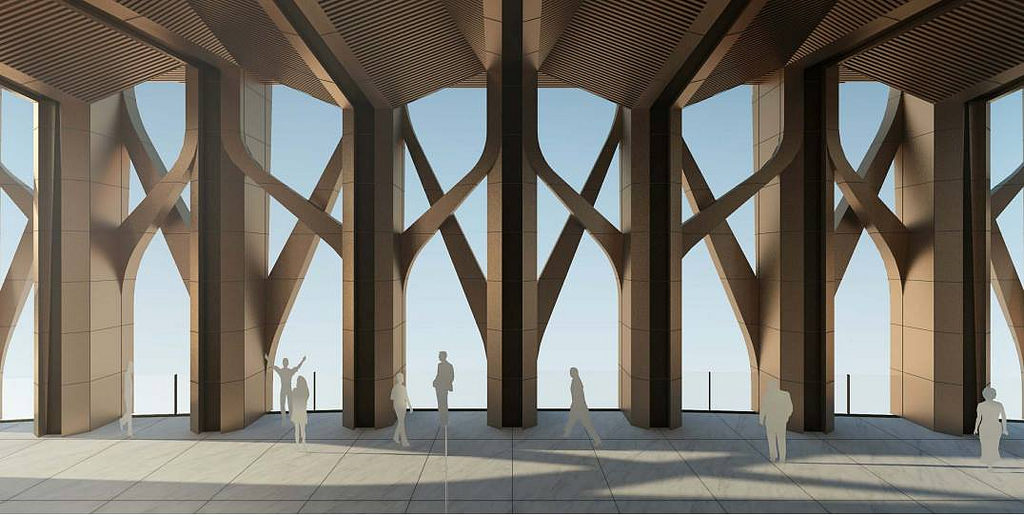
Observational Level Rendering via New York YIMBY
Bronze
45 Broad Street by CetraRuddy, New York City
Another tower that references the City’s art deco history, CetraRuddy’s 45 Broad Street will soon become the tallest residential skyscraper in Lower Manhattan. According to Cetra, “Simple glass boxes never took a referential approach to the site; they’re superimposed onto the context, rather than growing thoughtfully out of it. That approach is changing now, and the mood is that buildings can, and have to, respond to the environment and to their surroundings.”
45 Broad Street will occupy a vacant lot close to the New York Stock Exchange. With thin bronze mullions that stretch up the slender glass façades, the design for the 64-story building references surrounding art deco structures.
Research all your architectural materials through Architizer: Click here to sign up now. Are you a manufacturer looking to connect with architects? Click here.
The post Glass Towers Are So Passé. What Will Replace Them? appeared first on Journal.
, Jennifer Geleff, read more Journal http://bit.ly/2R18PZA
Yorumlar
Yorum Gönder